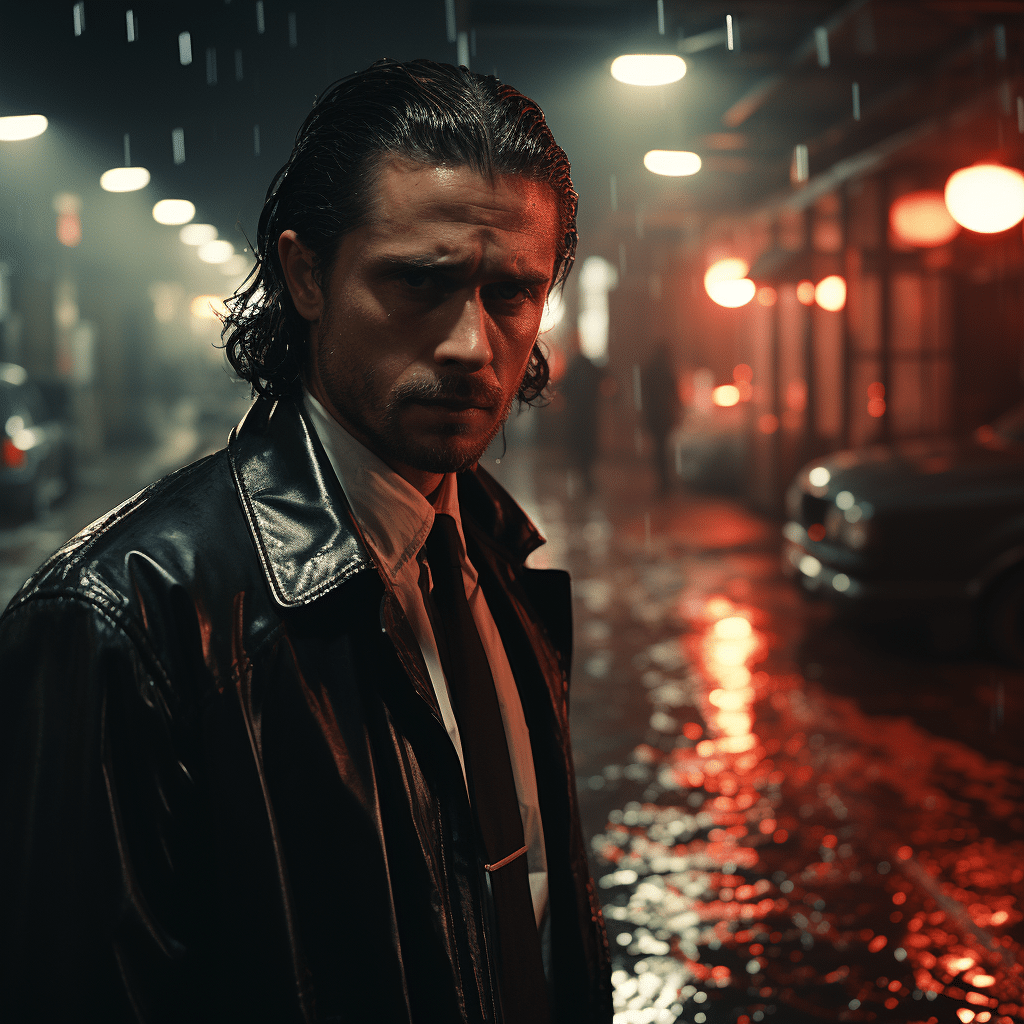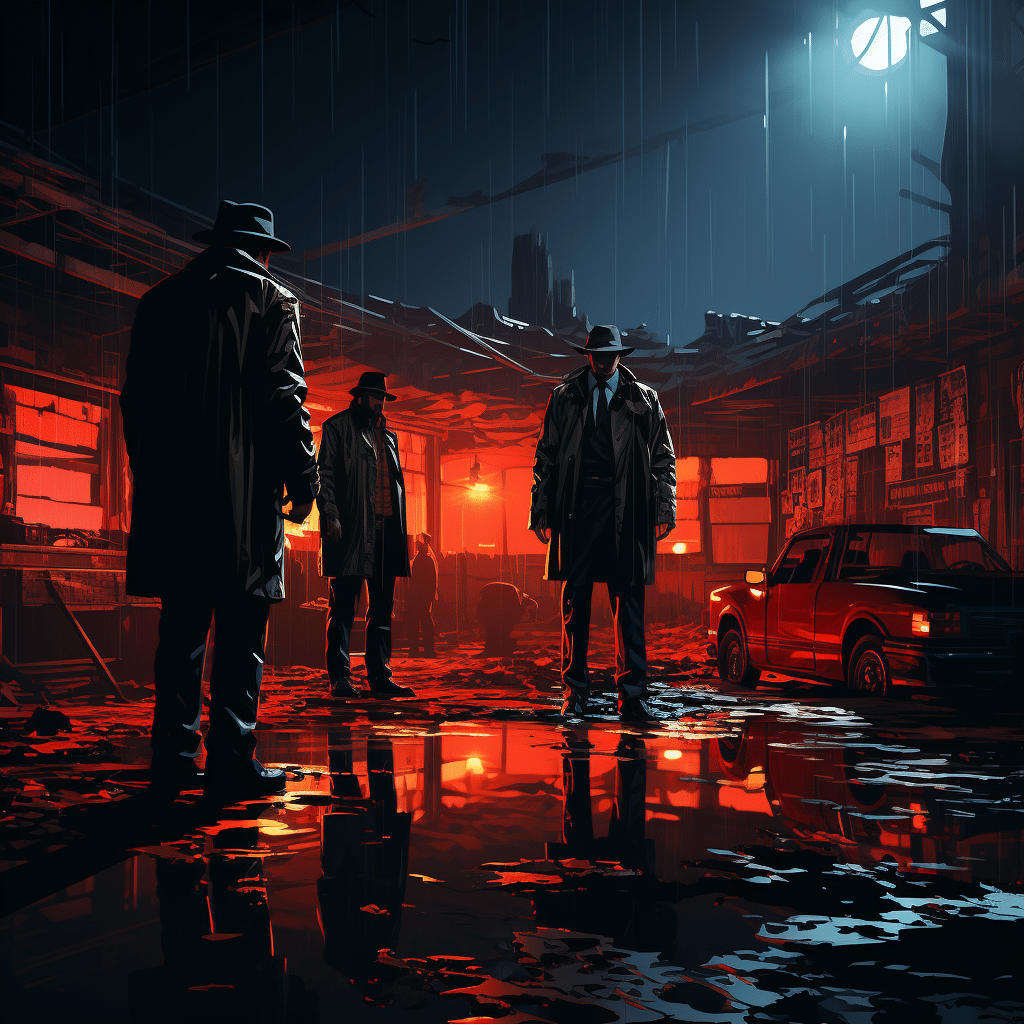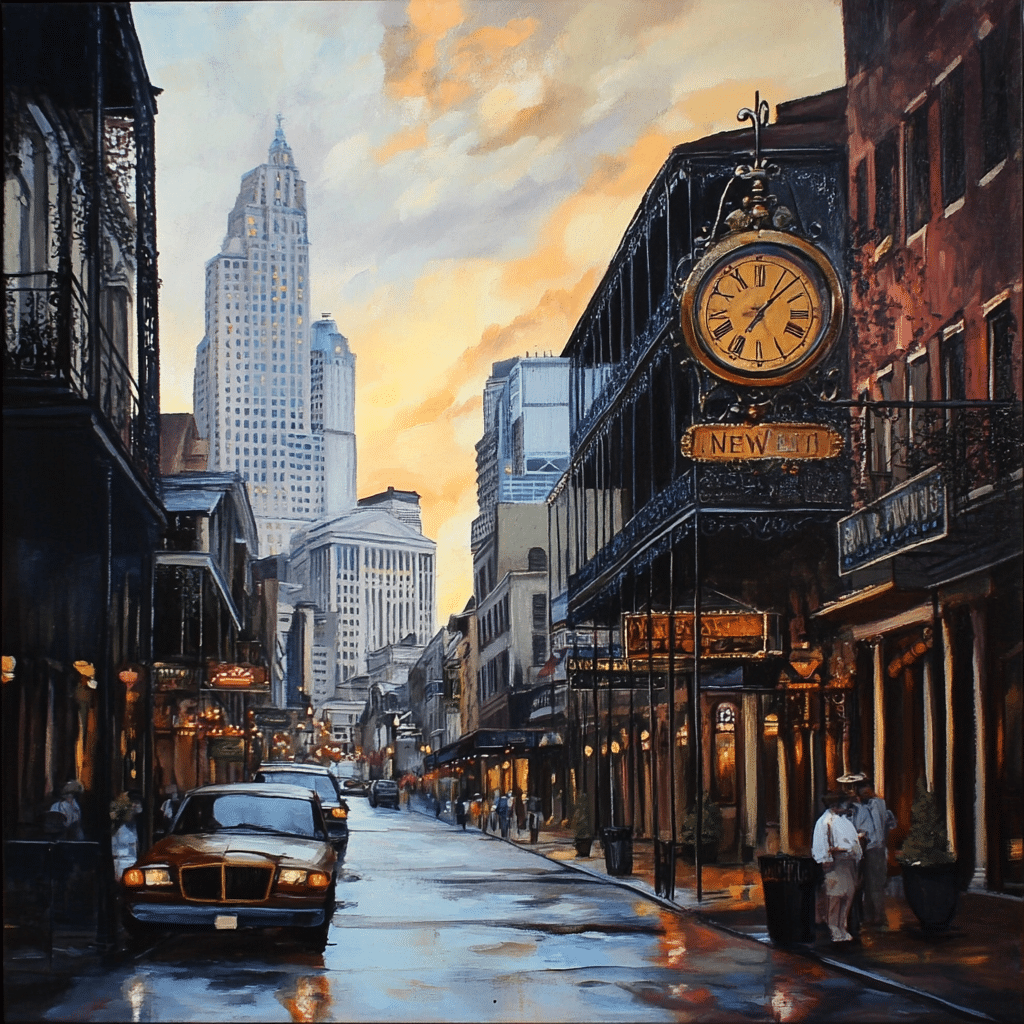Why You Need to Watch Pulp Fiction: Unpacking Tarantino’s Masterwork
In the electrifying cosmos of film, “Pulp Fiction” stands like a beacon shining its light over the last few decades – it’s not just a movie, it’s a full-throttle experience. Quentin Tarantino crafted not just a tapestry of interwoven stories in this 1994 classic, but a whole new fabric of storytelling. Watch “Pulp Fiction” because it isn’t just viewing; it’s a rite of passage into the annals of cinematic history.
Why, you ask? Well, let’s get under the hood. Tarantino’s narrative style is a beast of its own, breaking norms like a bull in a china shop. His blend of crisp, dynamic dialogue, manifold story arcs, and delicious dark humor keeps you glued to your seat, incredulous at the sheer audacity of his artistry.Pulp Fiction” has shaped contemporary cinema with its signature non-linear plot, which elevates tension and curiosity to near unbearable levels.
This isn’t your run-of-the-mill flick; it’s a masterclass in how to construct a cult classic that transcends time. It thrashes the traditional three-act structure with the glee of a rebel, composing a symphony of chaos that somehow harmonizes into an irresistible force. The spectrum of characters is as rich as Tarantino’s love for pop culture, and their quick-fire banter could make even the most stoic statue crack a smile.
A Scene-by-Scene Breakdown: Watch Pulp Fiction’s Storytelling Magic
Prepare yourself. You’re about to embark on a ride through Pulp Fiction’s narrative labyrinth that’ll make your head spin – in all the right ways. Tighten your seatbelts. We start in a diner with a couple of small-time crooks, then zip over to a couple of hitmen philosophizing about a “Royale with Cheese,” before we know it, those storylines collide with a grace you wouldn’t expect from such a violent waltz of plots and subplots.
Every scene, from the adrenaline-fueled overdose of Mia Wallace to the surprisingly reflective ‘gold watch’ saga, demands your full attention, not just for the story but for the meticulous crafting of each moment. Tarantino’s work here is akin to a fine watchmaker – each cog, every small piece is deliberate, geared towards the climax in seamless precision. And let’s not forget, each fragment has its own peculiar ambiance – it’s like having the finest courses from different cuisines, forming an unexpected yet sublime meal.
The order of events – let’s just say, conventional chronology got sacked. Tarantino’s play on time is as fluid as a New York to London flight, hopscotching back and forth yet always landing smoothly on the runway. The audacity to tell a tale in fragments and still maintain a lucid, compelling narrative is something that makes you want to watch “Pulp Fiction” with the attentiveness of a hawk.

| Feature | Details |
|---|---|
| Title | Pulp Fiction |
| Director | Quentin Tarantino |
| Release Year | 1994 |
| Genre | Crime, Drama |
| Main Cast | John Travolta, Uma Thurman, Samuel L. Jackson, Bruce Willis, etc. |
| Plot Synopsis | Interwoven tales of seven criminals seeking violence and redemption. |
| Streaming on Hulu Combo | Available with Hulu, Disney+, ESPN+ bundle – $14.99/mo (with ads) |
| Streaming on Netflix | Available on Netflix – Plans starting at $9.99/month |
| Noteworthy Elements | – Self-reflexive style |
| – Unconventional narrative structure | |
| – Extensive homage and pastiche elements | |
| Critical Acclaim | – Considered Quentin Tarantino’s magnum opus |
| – Highly praised screenwriting | |
| Cultural Impact | Regarded as a touchstone of postmodern film |
| Awards | Academy Award for Best Original Screenplay (among others) |
| Running Time | 154 minutes |
| MPAA Rating | R (for strong graphic violence and drug use, pervasive strong language) |
| Benefits of Watching | – Entertainment and appreciation of cinematic technique |
| – Cultural literacy in iconic films | |
| – Engaging storytelling and character development |
The Dialogues You Can’t Miss: Tarantino’s Lingual Artistry
Oh boy, the dialogues! They’re the sort that stick in your mind like chewed-up gum on your boots. Take Jules Winnfield’s recitation of “Ezekiel 25:17.” Fierce, isn’t it?
And, of course, the downright iconic exchange about the cultural peculiarities of a “Royale with Cheese” in Paris isn’t just banter—it’s a gateway into the lives these characters lead. Tarantino carves these dialogues with the finesse of an artist. His words are sharp, no doubt, but also they swing with rhythm; the kind that resonates in the same beat as the brash soundtrack. It’s no surprise why even now, dialogues from “Pulp Fiction” are quoted with a mix of reverence and sly winks.
Watch Pulp Fiction for the Soundtrack: A Synergy of Audio and Visuals
Gotta be honest here—if you haven’t jived to the tunes of “Pulp Fiction,” you’re missing out on half the ride! Tarantino is a maestro at concocting harmonious marriages between music and visuals, with the seamless blend of both mediums creating a sensory feast.
The opening credits roll, and Dick Dale’s “Misirlou” blasts you into the story with an electric shock. Each track in the film feels like it was custom-composed for its scene—whether it’s the twangy riffs of “Jungle Boogie” juxtaposed with Jules and Vincent’s cool stroll or the harmonizing “Girl, You’ll Be a Woman Soon” during Mia’s pivotal overdose scene; the music is as much a character in the film as the actors themselves.

The Making of an Opus: Behind-the-Scenes Insights
Let’s pull back the curtain on “Pulp Fiction’s” production – it’s as riveting as the film itself. Tarantino’s journey from script to screen was chock-full of hurdles that’d make lesser directors throw in the towel. Financing nightmares plagued its inception, like a lingering villain in a shadowy alley. Yet, with an uncanny persistence, both Tarantino and producer Lawrence Bender wrangled a scanty $8 million budget to make their vision come to life.
The casting could’ve looked entirely different. Can you imagine “Pulp Fiction” without Samuel L. Jackson’s Jules Winnfield? That reality almost came to pass! But fate intervened, and Jackson delivered a reading that etched his character into the memory of cinema. The rest of the casting followed suit with serendipity on their heels, each actor slipping into their roles as if they were crafted just for them.
The dint of beg, borrow, and near-steal filmmaking techniques employed were indeed a spectacle of guerilla creativity. The result? Not just any film—a cultural quake that reshaped the film landscape.
Cultural Impact: How Watching Pulp Fiction Changed Cinema
Since its 1994 debut, “Pulp Fiction” has become more than a film; it’s a cultural cornerstone. It didn’t just push the envelope – it set it on fire and then used it to light a cigarette. Its raw, snapshot portrayal of life’s absurdities and brutalities rung as true then as it does now.
Its narrative structure is like a ricocheting bullet, impacting future filmmakers who aspire to tell stories as fearless and original as this. The film doesn’t shy away from the grotesque or the beautiful, dragging the underbelly of society into the limelight with an unfiltered lens.
The chacastered dialogue finds echoes in classes where students chew over its influence and dissect its makings. Blockbusters and indies alike draw inspiration from the audacity of “Pulp Fiction’s” storytelling bravado.
Performance Analysis: Watch Pulp Fiction’s Cast Bring Characters to Life
Travolta, Thurman, Jackson – household names, right? But let’s rewind. Before “Pulp Fiction,” John Travolta’s career had hit a bit of a rough patch. Enter Vincent Vega: a hitman with a smooth dance and an even smoother way with words. This role tossed Travolta back into the limelight like a boomerang with style.
Uma Thurman’s Mia Wallace is nothing short of iconic; with her sleek bob and nonchalant dance moves, she embodied a new kind of femme fatale. Then there’s Samuel L. Jackson’s portrayal of Jules Winnfield – a man of depth, even while he’s knee-deep in crimes. His intense performance paired with articulate monologues gave us a character that’s both terrifying and philosophical.
Tarantino’s Filmography: Where Pulp Fiction Stands Amongst His Works
Pitch “Pulp Fiction” against the rest of Tarantino’s portfolio and you’ll find this isn’t just another feather in his cap – it’s the plumage. “Reservoir Dogs” may have introduced Tarantino’s knack for dialogue and stylized violence, “Kill Bill” showcased his love for choreographed action, but “Pulp Fiction”? This is the film where all these elements coalesce into something transcendent, securing its spot as his magnum opus.
It grafts into all his subsequent work, the R9 of his roster; every scene, every line, is a testament to his signature brand. To watch “Pulp Fiction” is to understand the essence of Tarantino’s aesthetic and thematic choices that thread through his entire career.
Aesthetics and Visuals: The Look of Pulp Fiction
Sharp suits, crisply ironed shirts, and that unforgettable black bob – Pulp Fiction’s styling alone could drive a trend. It’s a visual composition that’s as meticulous as it is daring. The color palette, from the lush red walls of Marsellus Wallace’s bar to the stark, overlit look of the ’50s-themed Jack Rabbit Slim’s, is carefully curated to evoke a certain mood and era.
Costumes act as an extension of the characters’ personalities, from Vincent’s bolo tie to Jules’ ‘Bad Motherf*cker’ wallet. The attention to detail in the mise-en-scène, those carefully placed objects and setting—like the vintage board games in Lance’s house—all contribute to an aesthetic that’s as distinct as it is influential.
How to Watch Pulp Fiction Today: Formats and Availability
Even as we rocket through 2024, watching “Pulp Fiction” remains as accessible as ever. Whether you’re a fan of small screens or big spectacles, the film is available across a plethora of platforms. You can catch it on Netflix, where plans start at a neat $9.99/month, or undertake a full Tarantino marathon with Hulu, Disney+, and ESPN+ bundled up for $14.99/month.
If you seek to relive the cinema experience, keep your eyes peeled for special screenings that pop up like delightful easter eggs. For the purists, there’s always the option to own it on home media, complete with extras that are as tasty as a “Royale with Cheese.”
The Legacy Continues: Watch Pulp Fiction’s Influence on New Generations
Fast-forward to the now, and “Pulp Fiction” still pulsates with vibrancy, threading itself into the minds of new watchers. Its inclusion in media studies curricula and the reverberation of its style across other media stand testament to its undimming appeal.
It’s spun into pop culture threads, a backdrop to the high school enthusiasm of character analysis, and the butt of friendly parodies. The film is immortalized not just on celluloid but in the collective consciousness of its audience, spanning generations.
Innovative Wrap-Up: The Quintessential Tarantino Experience
As we draw the curtain close on Tarantino’s playbook, “Pulp Fiction” emerges as not just the quintessential Tarantino experience but as an epoch in cinema deserving of its magnum opus title.
Bold, brash, and unapologetically brilliant – it’s the kind of film that leaps out of the screen and into the pantheon of greats, a staple for any worthy film buff. It’s a concoction of genius, mischief, and sheer audacity that speaks to the maverick spirit in all of us. To watch “Pulp Fiction” is to embrace the wild heart of film, a heart that keeps on beating, reverberating through the halls of cinema’s grand history.
In a world where everything seems to have been done before, “Pulp Fiction” continues to shine—a fresh, edgy, genre-defying beacon, showing us all that, in cinema, the rules are there to be broken. And with that, here’s looking at you, kid. Watching “Pulp Fiction” isn’t merely a suggestion; it’s an invitation to be part of a legacy that’s as enduring as it is bold. Don’t miss the chance to be swept up in its timeless swirl of action, wit, and cinematic genius.
Get Ready to Watch Pulp Fiction Again!
Hold onto your popcorn! As you get ready to watch Pulp Fiction, remember there are more connections in this cinematic gem than just the characters’ intertwined stories. Speaking of connections, while Quentin Tarantino was busy crafting his masterpiece, Brad Pitt – who surprisingly never appeared in any of Tarantino’s movies – was making headlines of his own. In another universe, Tarantino might have directed a scene where a character, perhaps played by Pitt, ruminated on the complexities of a brad pitt girlfriend – an Easter egg for the gossip-hungry fans, perhaps?
Moreover, as you deep-dive into the criminal underworld of Pulp Fiction, it’s a stark contrast to the lives of everyday folks dealing with routine dilemmas, like trying to find that poor man ‘s Ozempic in a bid to stay healthy without breaking the bank. Just imagine Jules Winnfield’s iconic biblical speech ending with some pithy life advice on affordable healthcare!
Behind the Scenes and Across the Pond
Imagine this: you’re curling up on the couch to watch Pulp Fiction for the umpteenth time, and out of the blue, you ponder how fast Vincent and Jules could have made a new york To london flight time if they needed to lay low – hypothetically, in the face of an accidental shooting. Fun fact – you could almost watch Pulp Fiction one and a half times during such a flight!
Transitioning from the fast-paced trivia to the slow-burn suspense around potential easter eggs budding in the world of visual storytelling, the mysterious Uncle howdy might seem like he’s stumbled straight out of a Tarantino script. Perhaps in an alternate cinematic universe, Uncle Howdy would sidle up to the bar next to the Pulp Fiction crew, tipping his hat amidst the dance of dialogue.
On the Cutting Room Floor
As much as Pulp Fiction grips its audience, let’s not forget those little life admin tasks that sneak up on us — sort of like how Vincent Vega manages to forget crucial details at the most inconvenient times. Sometimes you realize you might need to do some grown-up things like look into loan Refinancing – possibly as nerve-wracking as waiting for Mr. Wolf to solve a problem.
And for the love of film, don’t get started on the “what-ifs” of casting! Vincent Vega’s iconic dance scene would have had a different spin if the role went to someone else, just like if you decided to watch On The Line 2024, expecting it to capture the same raw energy as Pulp Fiction. As fate would have it, whether refinancing loans or discussing potential sequels, it seems there’s more than one way to hold your breath in anticipation. Now go on, hit play, and watch Pulp Fiction once more – after all, what else would you do with your time, right?

What platform is Pulp Fiction on?
– Oh boy, feeling like a couch potato? If you’re itching to dive into Quentin Tarantino’s tangled masterpiece, grab some popcorn and head over to Hulu. You can catch “Pulp Fiction,” alongside Disney+ and ESPN+ goodies, all for just $14.99 a month. And don’t you worry Netflix junkies; Tarantino’s classic is also ready to stream there with plans kicking off at $9.99/month. That’s double the fun!
Is Pulp Fiction available on Netflix?
– You betcha! “Pulp Fiction” is calling all Netflix subscribers for a stream-a-thon. Quentin Tarantino’s cinematic gem is up for grabs, so get ready to hit play on Netflix where plans start at the sweet price of $9.99 a month. Don’t miss out on this whirlwind of a film!
Does HBO have Pulp Fiction?
– Nope, no dice. If you’re scrounging around HBO for Quentin Tarantino’s “Pulp Fiction,” you’re barking up the wrong tree. Time to jump ship and check out other services ’cause this classic’s not lurking in HBO’s library.
Why is Pulp Fiction such a famous movie?
– Ah, “Pulp Fiction,” the crème de la crème of Tarantino’s work! It’s a bigwig ’cause it ripped up the rulebook with its witty banter, off-the-wall structure, and a serious knack for paying homage to the cool stuff that came before it. Fans and critics alike can’t stop gabbing about it — it’s the poster child for postmodern cinema!
Did Johnny Depp play in Pulp Fiction?
– Johnny Depp in “Pulp Fiction”? Nah, that’s a no-go. Our man Johnny didn’t grace this one with his presence. The star-studded cast was dynamite without him, though, so give it a watch and see who’s who in this quirky crime saga.
Why is it called Pulp Fiction?
– Talk about a throwback! “Pulp Fiction” gets its moniker from the cheap, gritty, and gripping popular novels of the mid-20th century. You know, the kind with the lurid covers? Tarantino’s flick echoes their style: it’s brash, it’s rough around the edges, and it’s got more twists than a pretzel factory.
When did Netflix remove Pulp Fiction?
– Lookin’ for “Pulp Fiction” on Netflix and coming up empty? Well, bummer alert: Netflix yanked it off the virtual shelf not too long ago. But hey, don’t throw in the towel—remember, Hulu still has your back!
How popular was Pulp Fiction when it came out?
– “Pulp Fiction” wasn’t just a hit — it was a cultural earthquake when it hit theaters! Audiences went gaga, and the box office went ka-ching. This wild ride won hearts faster than you can say “Royale with cheese,” making it a box office and cultural smash.
Why is Pulp Fiction out of order?
– Well, why’s “Pulp Fiction” all scrambled, you ask? That’s Tarantino for ya! He went and tossed the storytelling rule book out the window. Mixin’ it up gives us a fresh look at these crooks’ capers from all angles—keeps you on your toes and makes the puzzle that much sweeter to solve.
Is Pulp Fiction on prime?
– Needing to stream “Pulp Fiction” on Prime? Not gonna happen, chief. Amazon Prime isn’t offering this iconic film at the moment. But remember, Netflix and Hulu are both throwing a viewing party, so hop on over there!
How long is the film Pulp Fiction?
– Settle in, folks! “Pulp Fiction” is a wild 154-minute ride. That’s right, over two and a half hours of twisty tales and iconic dialogues. Make sure you’ve got enough snacks to last the marathon!
Will there be a Pulp Fiction 2?
– “Pulp Fiction 2”? Dream on—there’s no sequel in the works for this Tarantino classic. Seems Quentin decided some stories are better left as standalones. So, leave room for imagination and enjoy the original ride again!
What is the greatest scene in Pulp Fiction?
– Pickin’ the greatest scene in “Pulp Fiction” is like choosing your favorite child – impossible! But if we gotta talk iconic, nothing beats that adrenaline-pumping, needle-to-the-heart moment. It’s edge-of-your-seat intense and as memorable as it gets.
What is the best Tarantino film?
– The best Tarantino film debate can get as heated as a Mexican standoff. While “Pulp Fiction” is often the top dog, Tarantino’s got a treasure chest of movies that vie for the crown. Each has its own flavor, so take your pick and let the film debates begin!
Why did Pulp Fiction win an Oscar?
– “Pulp Fiction” snagged itself an Oscar for its screenplay, and let me tell ya, it was no fluke. The sharp dialogue, bold structure, and sheer originality made it the talk of Tinseltown. It was Tarantino and co-writer Roger Avary’s night to shine brighter than a briefcase of gold.





















